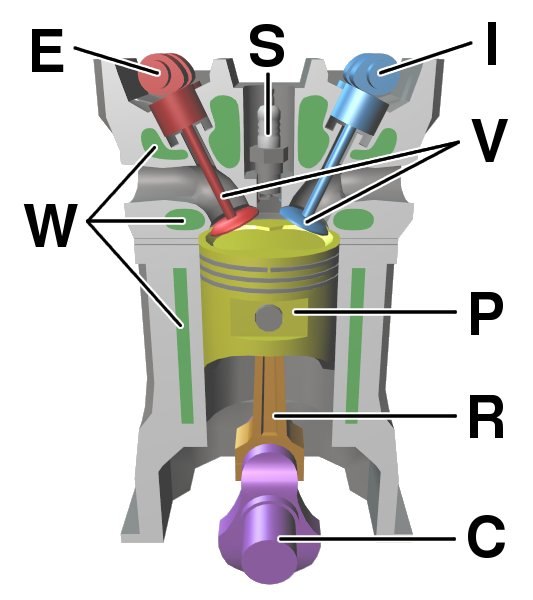Dead centre (engineering)
In a reciprocating engine, the dead centre is the position of a piston in which it is either farthest from, or nearest to, the crankshaft. The former is known as top dead centre (TDC) while the latter is known as bottom dead centre (BDC).
Position of pistons
A reciprocating engine, also often known as a piston engine, is typically a heat engine that uses one or more reciprocating pistons to convert high temperature and high pressure into a rotating motion. This article describes the common features of all types. The main types are: the internal combustion engine, used extensively in motor vehicles; the steam engine, the mainstay of the Industrial Revolution; and the Stirling engine for niche applications. Internal combustion engines are further classified in two ways: either a spark-ignition (SI) engine, where the spark plug initiates the combustion; or a compression-ignition (CI) engine, where the air within the cylinder is compressed, thus heating it, so that the heated air ignites fuel that is injected then or earlier.

Internal combustion piston engine Components of a typical, four-stroke cycle, internal combustion, gasoline piston engine. C. Crankshaft E. Exhaust camshaft I. Intake camshaft P. Piston R. Connecting rod S. Spark plug W. Water jacket for coolant flow V. Valves
Ray-traced image of a piston engine



